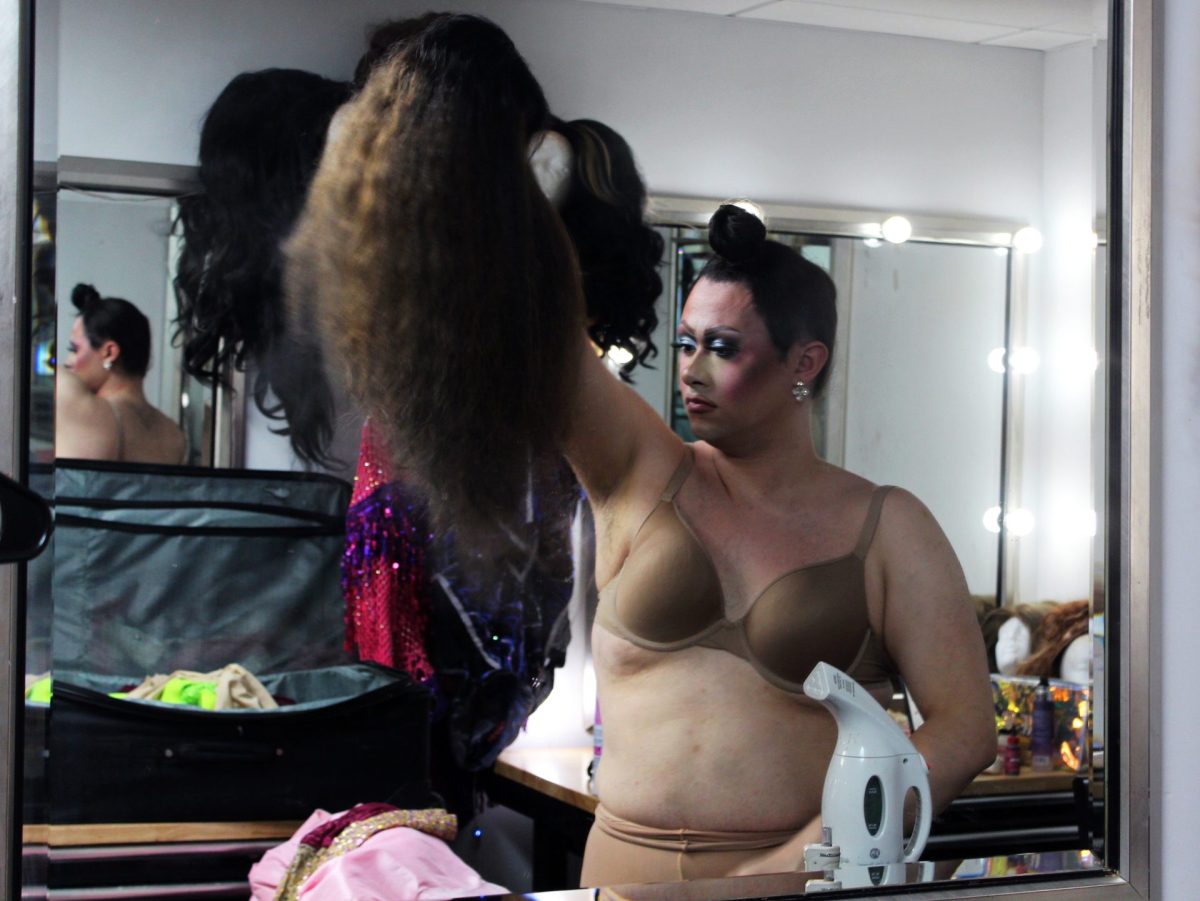Last year, you couldn’t walk two paces inside a boutique without stumbling into yet another boyfriend blazer. There were also suits with razor sharp tailoring and fedoras galore, as designers appeared to be dressing the career woman preparing to stand her own in the midst of an economic slump. The look was practical, androgynous and the epitome of boardroom chic.
But that was so 2011.
Yesterday’s masculine lines have significantly softened, making way for today’s dare-to-try trend: the peplum. The flouncy fabric, which is a tiny overskirt that flares out over the hips, was designed to create the illusion of a tiny waist. It soared in popularity throughout the 1930’s and 1940’s and re-emerged in the 1980’s in all its shoulder-padded glory. This time, however, the little hip accent has shaken off its eighties-prom-dress vibe and given itself a contemporary makeover.
According to boutique owner Sara Platt, 26, the popularity of curvy celebrities such as Beyonce and Grammy winner Adele signals the return of the classic hourglass silhouette.
“Throughout the 1990’s, we saw that typical six-foot, bean pole model with no curves,” said Platt, who owns The Sweet Apricot Shop, a boutique based in Quincy, Illinois. “Last year was a big year for the minimalist look, and the peplum is a way to update that with just a little bit of a flare.”
Although it appeared as a micro trend during the fall/winter 2011 collections, it’s a look that appears to have especially blossomed for spring. Givenchy gave the peplum a futuristic spin with sculptural ruffles in summery white that gracefully cascaded along the hips. Meanwhile, Elie Saab’s fire-engine red shift dress, which featured simple protruding panels along the waist, was a lesson in understated elegance.
The normally minimalist French label Céline recreated the peplum as a detachable deconstructed belt that can be worn over skirts or trousers. Pastels reigned at Louis Vuitton where the peplum appeared on a crocodile biker jacket in powder blue. Actress Emma Stone proved that color blocking is back when she stepped out in a red and fuchsia Giambattista Valli dress featuring a giant bow peplum.
But as with any trend, it’s best approached with a great deal of restraint. “I love the new peplum tops,” says Mia Fortuna, 42, a Chicago-based stylist. “When paired with just a pair of skinny cropped pants it’s very 1950s and it’s flattering on everyone.” She also added that three-quarter sleeves help to add balance to the volume of the peplum at the hips.
And when it comes to patterns, Platt recommends non-contrasting palettes, such as singer Fergie’s black and gray polka dot peplum dress by Marc Jacobs. “Stay away from geometric shapes, plaid or anything with a dizzying pattern,” she warns. “That’s too much and you’ll loose the silhouette that the peplum creates.”
But it’s not just the couture pieces with their astronomical price tags that are gaining fans among the fashion pack. “Jason Wu actually did a gorgeous yellow peplum top for Target,” says Fortuna. “I loved it because it was such an outright 1950’s look.”
Indeed, nostalgia appears to be the theme for the entire spring/summer 2012 collections. Without John Galliano’s flamboyant touch to steer the house of Dior, questions arose about the future of the luxury brand. But under the guidance of its new designer Bill Gaytten, the label reworked and revamped the iconic bar jacket. The result was dreamy sheer suits and glamorous secretary looks that put the brand at the forefront of this season’s trend.
It seems a fitting tribute since the Bar jacket was first created by Christian Dior himself. The peplum all but disappeared due to the fabric shortage during World War II in the early 1940’s. Therefore, when Dior first showcased the bar jacket in 1947 with its cinched waist and dramatic peplum detail, Harper’s Bazaar editor Carmel Snow instantly anointed the silhouette as the “New Look.”
“With the New Look, Dior brings back the corset or the girdle to make the waist tight and small, which wasn’t that important in the early 1940’s during the war,” said Nan Cibula-Jenkins, the head of costume design at The Theatre School at DePaul University. “With the New Look of the 1950’s and beyond, Dior enhanced the narrow waist and the full female hips.”
“I would say it’s definitely up there with the Chanel jacket,” said Mark Hall, 26, the costume mount and replica fabricator at the Chicago History Museum. “Dior’s bar jacket is very distinctive and very individual.”
Hall explained that the peplum is a design detail that was adapted from an ancient Grecian tunic called the ‘peplos.’ “Women and a few men would wear these tunics that were belted at the waist to create several folds,” he says. “The main idea behind the peplum design detail is to create the illusion of a smaller waist so it’s simply a repeat of what fashion has been trying to create for centuries.”
Cibula-Jenkins said it’s no surprise the peplum is making a post-recession comeback. “Fashion seemed kind of utilitarian for a while, and now we’re getting into more curves,” she said. “I think it’s because of the depressing economic environment right now. The economy is stagnant, businesses are folding and people are finding it hard to get jobs, so it’s a time when we want to take our clothes and fantasize with them a little bit more.”
She added that it’s the human need for fantasy that brought about some of the most stunning clothes during the Great Depression in the 1930’s. “People wanted to escape, they wanted to look at beautiful things,” said Cibula-Jenkins. “I think there’s a parallel in that [today].”
And judging from the enthusiastic adaptations of the peplum all over the runway, it seems that even the designers were in dire need of a little fantasy.







